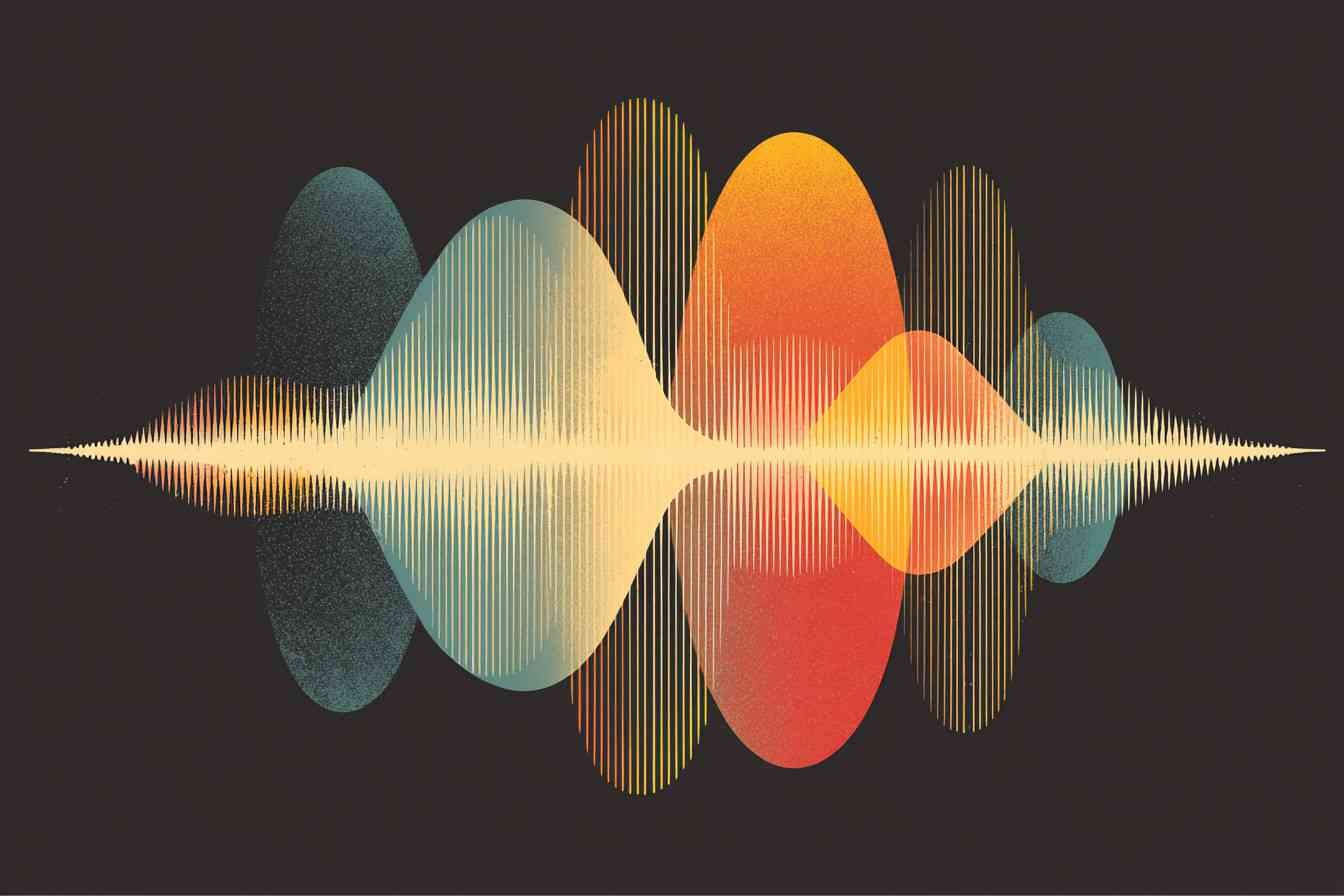The healing power of sound: how frequencies influence the mind and body

Vibrations as the essence of life
Everything in existence is vibration. From the smallest atom to the grandest galaxy, all matter resonates with energy. This ancient concept, present in Hinduism, Buddhism, and Greek philosophy, finds confirmation in modern physics. Quantum theory reveals that what appears to be solid matter is in fact a field of vibrating energy. Human beings are no exception. Every organ, tissue, and cell in our body has a natural frequency at which it vibrates, creating a complex symphony of energy that defines our physical and emotional state.
Sound is not merely something we hear; it is something we feel. It travels through air, water, and solid matter, and because the human body consists of more than 70% water, these vibrations penetrate deeply into our biological system. When frequencies fall out of harmony due to stress, trauma, or illness, the body’s natural rhythm becomes disrupted. Sound therapy seeks to restore that resonance, allowing the body to re-tune itself to its natural state of coherence and balance.
The science of resonance and frequency
Every object in the universe has a natural resonant frequency, the frequency at which it vibrates most strongly. When an external vibration matches this frequency, resonance occurs, amplifying the effect. This is why a singer can shatter a glass by holding the right pitch, and why certain tones can have measurable effects on living tissue.
The Swiss physician Hans Jenny, the founder of cymatics, showed in the mid-20th century that sound frequencies can organize matter into geometric patterns. When he placed sand or water on vibrating plates, each frequency produced intricate, symmetrical designs, visual proof that sound shapes physical reality (Cymatics, Jenny). Since human cells are largely composed of water, they too respond dynamically to vibrational frequencies.
Resonance, then, is not a metaphor but a physical law: coherent vibrations can restore harmony to disordered systems. When applied therapeutically, sound can synchronize brainwaves, modulate the nervous system, and even influence cellular processes.
Brainwave entrainment and the rhythm of consciousness
The human brain operates through electrical impulses that oscillate at specific frequencies, called brainwaves. These frequencies correspond to different mental states:
- Delta waves (0.5–4 Hz): deep sleep, unconscious healing, regeneration.
- Theta waves (4–8 Hz): meditation, intuition, emotional release.
- Alpha waves (8–14 Hz): relaxation, creativity, light meditation.
- Beta waves (14–30 Hz): focus, problem-solving, active thought.
- Gamma waves (30–100 Hz): expanded awareness, peak cognitive performance.
When exposed to rhythmic or tonal stimuli, the brain tends to synchronize its own electrical activity with those frequencies, a process known as entrainment. Listening to drumming, chanting, or harmonic tones can gently guide the brain into a desired state, deep relaxation, alert focus, or meditative calm.
A study in Frontiers in Psychology (Goldsby et al.) found that participants who underwent a singing bowl sound meditation experienced significant decreases in tension, anxiety, and depression. Another study published in Psychological Reports (Le Scouarnec et al.) observed that repetitive low-frequency sounds reduced heart rate and improved parasympathetic nervous activity, supporting the notion that sound entrains both the mind and body.
Healing frequencies and their effects
528 Hz — The frequency of love and DNA repair
The 528 Hz tone, often called the “love frequency, ” is central to the ancient Solfeggio scale. Proponents such as Dr. Leonard Horowitz describe it as the vibration of life itself, resonating with the molecular structures of water and DNA (The Book of 528: Prosperity Key of Love, Horowitz). Laboratory experiments on water crystallization have suggested that exposure to 528 Hz frequencies leads to more symmetrical and coherent formations, while studies on cellular systems indicate potential DNA-stabilizing effects.
This frequency is also linked to the release of serotonin and oxytocin, neurotransmitters associated with happiness, trust, and emotional healing. Many sound healers use it in sessions to promote transformation and harmony at both the emotional and cellular level.
432 Hz — The natural resonance of the universe
For centuries, music was tuned to A=432 Hz, a frequency said to reflect the mathematical patterns of nature and the cosmic rhythm of the universe. The modern standard of 440 Hz was only adopted globally in the 20th century, largely for industrial uniformity. Advocates of 432 Hz, including scientists and musicians, argue that it aligns more closely with the Earth’s electromagnetic resonance known as the Schumann Resonance (around 7.83 Hz).
Listening to 432 Hz music is often described as warmer, deeper, and more soothing to the nervous system. Research in Acoustical Science and Technology (Calamassi & Pomponi) found that listeners reported reduced anxiety and heart rate variability when exposed to 432 Hz compared to 440 Hz music.
639 Hz — The frequency of connection
639 Hz, another tone in the Solfeggio scale, is believed to foster harmony in relationships, empathy, and emotional understanding. In vibrational medicine, it is associated with the heart chakra, the energetic center linked to compassion and connection. Listening to 639 Hz can balance interpersonal energy and reduce emotional isolation, often used in therapy for reconciliation or grief work.
Binaural beats — The science of brain entrainment
Binaural beats occur when two slightly different frequencies are played separately into each ear. The brain perceives the difference as a single pulsating tone equal to the frequency gap between them. For example, a 300 Hz tone in one ear and 310 Hz in the other produce a perceived 10 Hz beat, encouraging the brain to synchronize at that frequency, in this case, the alpha range.
Clinical research in Biological Psychology (Lane et al.) and Cognitive Processing (Wahbeh et al.) found that binaural beats can reduce anxiety, enhance cognitive flexibility, and improve sleep quality. This phenomenon demonstrates how external sound can directly influence internal brain function through frequency alignment.
Ancient sound traditions and their modern relevance
Sound healing is as old as civilization itself. Ancient Egyptians used vowel chanting to influence consciousness and balance energy fields. In India, Nada Yoga, the yoga of sound, teaches that the universe originated from vibration, known as Om. Tibetan monks employ harmonic overtone chanting to induce meditative states and purify the mind, while Aboriginal shamans have long used didgeridoos to restore energy flow in the body.
These traditions, once considered mystical, now find validation in neuroscience. Rhythmic repetition and harmonic resonance activate the parasympathetic nervous system, calming the amygdala and releasing endorphins. Studies have shown that slow rhythmic sound influences vagal tone, stimulating the vagus nerve that regulates the heart, digestion, and emotional equilibrium (The Polyvagal Theory, Porges).
Cellular healing through vibration
Beyond the psychological effects, sound frequencies can influence biological structures. A study in Nature Scientific Reports (Choi et al.) demonstrated that low-frequency acoustic stimulation between 30 and 120 Hz could enhance stem cell differentiation, suggesting regenerative potential. Similarly, Scientific Reports (Ziadé et al.) found that acoustic vibration promoted tissue repair and accelerated wound healing by activating mechanosensitive pathways in cells.
Vibroacoustic therapy, which uses low-frequency sound transmitted through special beds or chairs, is now being integrated into hospitals and rehabilitation centers. Research in Music and Medicine (Campbell et al.) shows promising results in pain reduction, muscle relaxation, and improved circulation among chronic pain patients exposed to sound-based treatment.
The emotional resonance of music
Music reaches parts of the human psyche that language cannot. Neurologist Oliver Sacks documented in Musicophilia how individuals with severe neurological impairments could still sing and respond emotionally to music even when speech was lost. The rhythmic and melodic aspects of sound engage both hemispheres of the brain, bridging logic and emotion.
In Alzheimer’s patients, familiar songs often revive long-forgotten memories. Music therapy in hospitals has been shown to reduce the need for pain medication and accelerate recovery times. Similarly, rhythmic auditory stimulation helps Parkinson’s patients improve gait and coordination, as the rhythmic cues retrain motor circuits in the brain.
Emotionally, music modulates the release of dopamine and oxytocin, chemicals responsible for pleasure, bonding, and motivation. The right music can lift mood, relieve anxiety, and help process trauma by providing a safe emotional container for expression.
Everyday practices for sound healing
Sound healing is accessible to everyone. You can bring it into daily life through simple practices:
- Listen to 432 Hz or 528 Hz music during meditation, relaxation, or creative work.
- Use Tibetan singing bowls or tuning forks to bathe your body in harmonic resonance.
- Chant, hum, or use vocal toning to stimulate the vagus nerve and balance your energy.
- Practice deep breathing with rhythmic sound to entrain the heartbeat and calm the mind.
- Minimize exposure to chaotic or dissonant noise, which can cause stress and tension.
Even short daily sessions can create measurable effects on well-being, improving emotional regulation, sleep quality, and focus.
The future of sound medicine
The emerging field of vibroacoustic and frequency medicine aims to integrate sound-based therapies into mainstream healthcare. Researchers are experimenting with frequency-specific microcurrents, sonic acupuncture, and even sound-driven nanotechnology for targeted drug delivery.
Institutes such as the Sound Healing Research Foundation and universities in Finland and Japan are conducting cross-disciplinary studies on how vibration affects neural plasticity and immune function. Early results suggest that sound therapy could become a complementary treatment for conditions ranging from PTSD and depression to autoimmune disorders.
As we rediscover the ancient truth that the universe is built on vibration, sound emerges not merely as an art form but as a medicine. It reminds us that healing is not only biochemical, but vibrational, a return to harmony between body, mind, and the frequencies of the world around us.
When we listen deeply, we are not just hearing sound, we are remembering our connection to the fundamental rhythm of life itself.


















